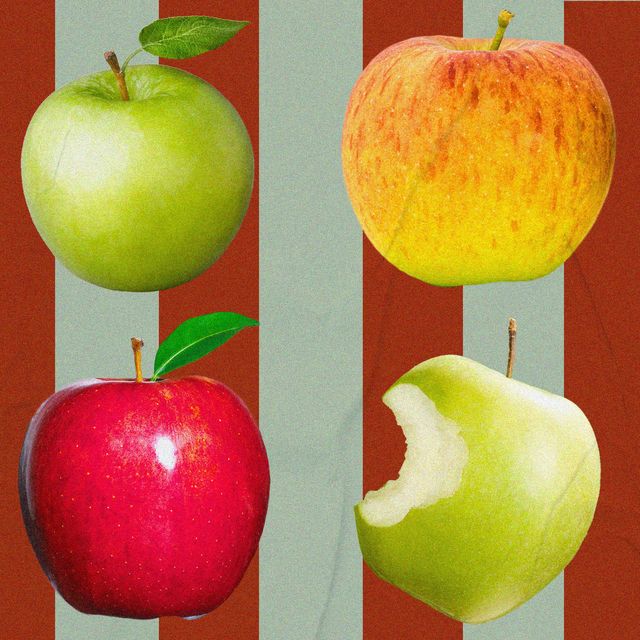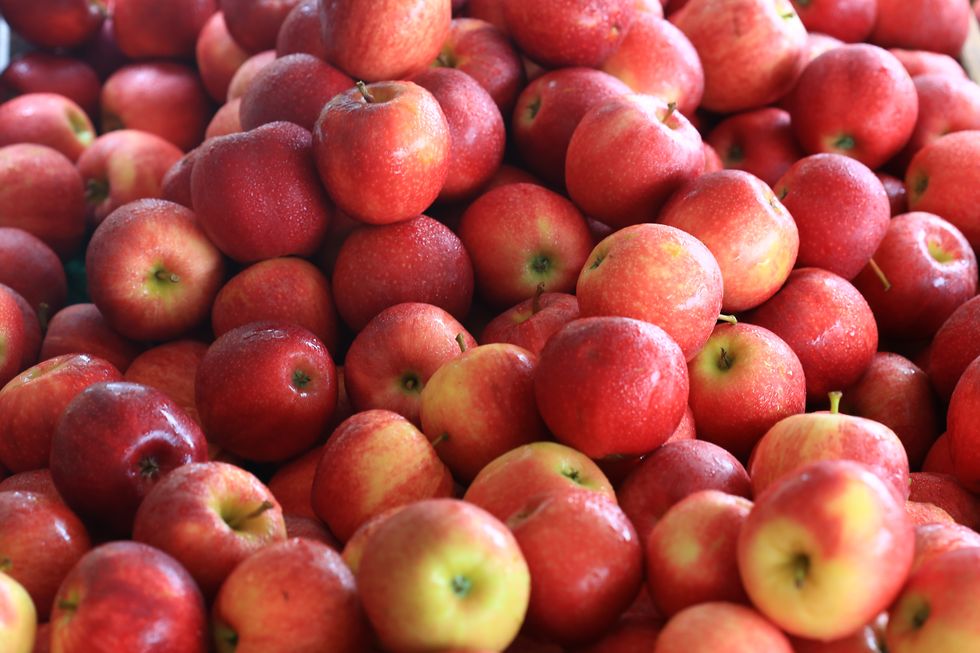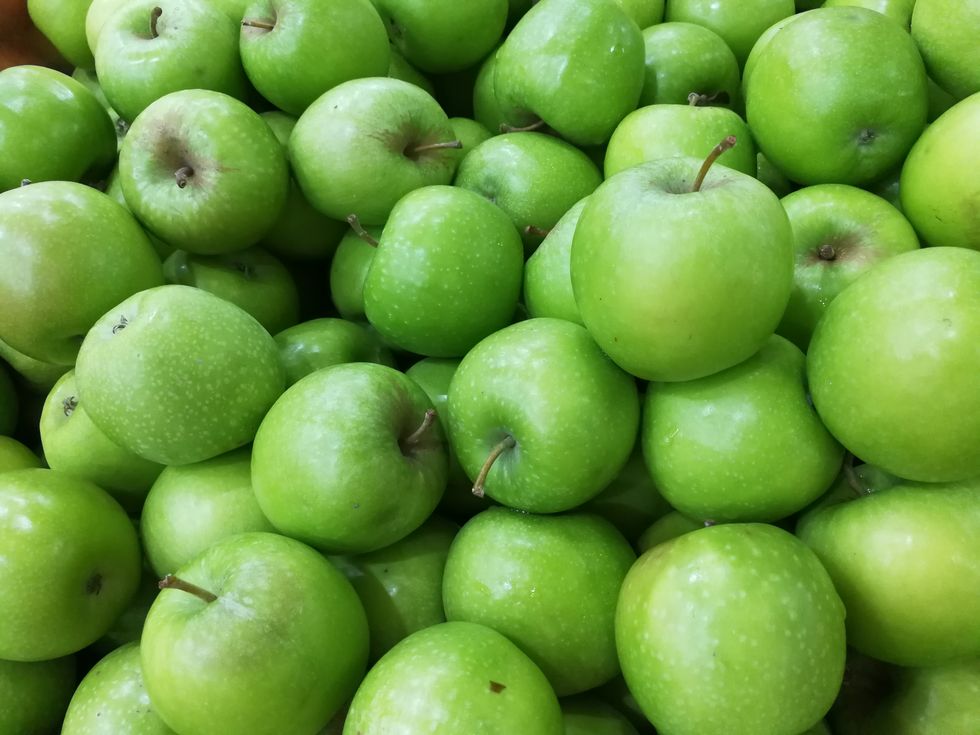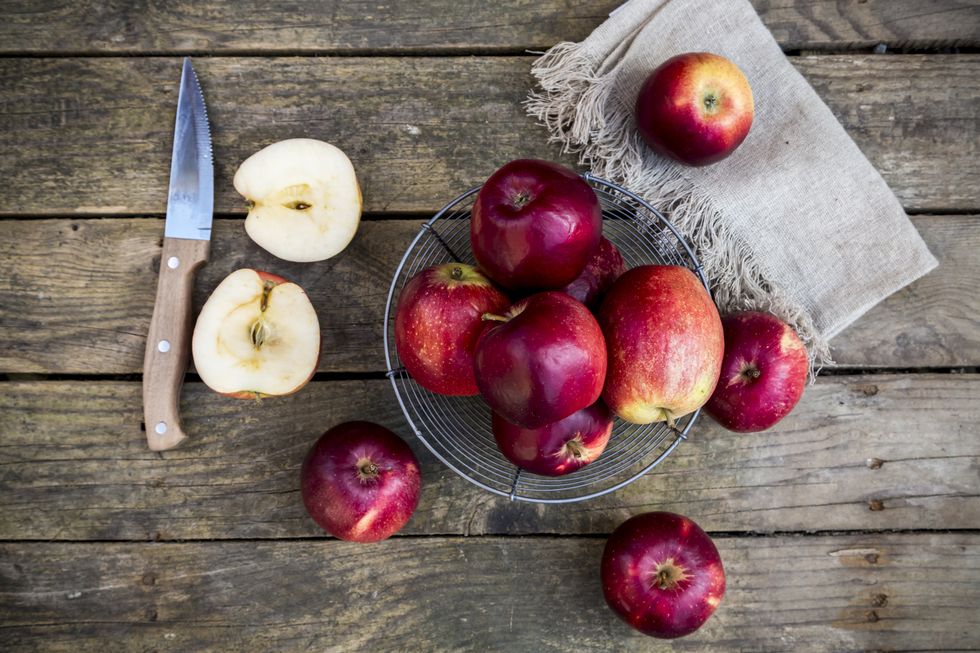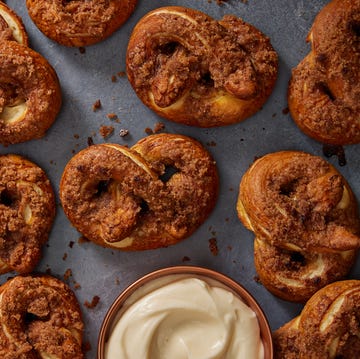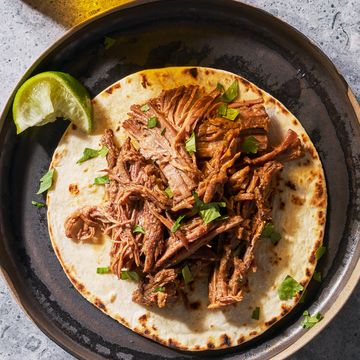Apples — they keep the doctor away, and they were the catalyst for Newton’s law of gravity. They taste great too.
In fact, apples are one of the most popular fruits in the U.S., and they go hand in hand with autumn, whether it’s snacking on cider donuts from your local farmers market, baking a decadent apple pie, or whipping up a batch of caramel apples as a delicious Halloween treat.
Apples have been around for thousands of years, but not every apple is the same. There are more than 7,500 varieties of apples worldwide, ranging from recognizable names like Granny Smith to lesser-known varieties like Pink Pearl and Roxbury Russet. This incredibly diverse roster includes a bevy of cultivars, or apples that have been bred for specific flavors, textures, colors, and uses. Take Washington state’s Cosmic Crisp, which is grown for its durability and shelf life, or the Anna apple, created distinctly for warmer climates.
While buying organic apples is the best way to avoid ingesting pesticides, you can also rinse nonorganic apples under cold running water to remove any chemical residue from their surfaces. In the end, both organic and nonorganic apples provide the same overall nutrients. We’re talking antioxidants like flavonoids — plant nutrients that can help your body fight toxins — fiber (which exists mostly in the apple’s skin), and a modest amount of vitamin C.
Deciding on Which Apple to Use
When choosing an apple, consider its taste, texture, and how you’re planning to use it. Apples might be sweet, tart, or a little of both. Some offer hints of cinnamon spice. Others are aromatic and have a honey-like flavor. Although popular apple varieties like Gala and Honeycrisp are delicious when eaten right off the tree (earning them the moniker “table apples”), others require the use of an oven or stove top to bring out their best qualities. However, most of the well-known varieties are easily edible whether raw or cooked.
Shelf life varies among the many apple types, and harvests can occur any time between late July and early November, depending on the type. Of course, you can easily find apples in grocery stores year-round.
To help narrow down your choices, here are 10 of our favorite apple varieties, what they look and taste like, and how best to use them.
Honeycrisp
Honeycrisps are the official state fruit of Minnesota and were first developed at the University of Minnesota’s Horticultural Research Center in the late 20th century. They’re also among the most popular apple varieties in the U.S.
Medium to large in size, these apples are great for eating raw. Their name comes from the apple’s honey-sweet flavor. They are also extraordinarily crisp and juicy, with just the right amount of tartness to balance out the sweetness. These qualities make Honeycrisps an ideal apple to use in desserts, such as homemade apple crisp or delectably mouthwatering baked apples.
Honeycrisps are recognizable by their roundish shape and color combo of pale green/yellow and pink/red. This coloring will either appear blushed, meaning with an overlay of pink to red, or striped.
Something to note: Because Honeycrisps are bred for their taste rather than their durability, they tend to bruise easily. This means they’re often pricier than other apples because they require special padding when shipped.
Fuji Apple
If you’re looking for an apple that’s oh so sweet, then the Fuji apple is for you. Fujis originated in Japan in the 1930s and are a cross between two American apple varieties: Red Delicious and a Virginia heirloom apple called the Ralls Janet. The result is an apple that’s both remarkably crunchy and incredibly juicy, making it ideal for eating fresh. Its sweetness and low acidity (which helps ward off heartburn) also lends itself well to juicing. Another bonus: Fuji apples have a relatively long shelf life, so you don’t have to use them up right away.
These thick-skinned apples tend to hold their shape relatively well when baked, but they make an even better coleslaw and are wonderful for salads, like this chicken salad tossed with toasted pecans and cherry tomatoes. Consider serving sliced Fuji apples alongside cheeses like Havarti and Gorgonzola.
Round and large, Fuji apples are two-tone in color, with a yellow-green base and pinkish-red highlights that appear either striped or blushed.
Gala
A cross between Golden Delicious and Kidd’s Orange Red, the Gala apple is juicy (though not as juicy as a Fuji apple), aromatic, and extremely versatile, making it one of the country’s most popular apple varieties. It’s also a superb all-around apple, with a crisp bite and a naturally mild sweetness that doesn’t overdo it.
Like Fuji apples, they lend themselves well to salads and are great for making applesauce. Their mild flavor works especially well in baby food.
Gala apples are small to medium in size and heart-shaped, with a bicolor that’s pale yellow on the base, and blotches or stripes of pinkish red atop.
Granny Smith
These medium-sized bright-green apples are a U.S. favorite with their incredibly long shelf life and crisp, tart flavor. Chock-full of sour flavor (thanks to their high level of acidity), they’re equally appetizing when eaten raw or baked into cobblers, crumbles, and even dumplings. Their firm flesh holds up especially well when cooking, making them a choice ingredient for your next apple pie. They’re also good for adding a bit of crispness and tanginess to your homemade stuffing.
Fun fact: Granny Smiths are named for an actual person: Maria Ann Smith, a British-Australian orchardist who cultivated the apple from an unintended seedling in the late 19th century.
Cripps Pink
Cripps Pink is one of several apple cultivars that are sold under the trademark (and decidedly sexier name) Pink Lady. It comes from crossing two apple varieties, the Golden Delicious and Lady Williams, resulting in an offspring that boasts a decidedly sweet-tart taste (it’s a little more tart than sweet) and a wonderfully effervescent finish.
Eat Cripps Pink raw, or try them poached in wine with orange and pomegranate. Their flavor is actually enhanced after a few weeks in the fridge. Cripps Pink are also slow to brown, making them an ideal addition to your next fruit salad.
These apples are medium to large in size and sport a pink blush overlay, with a base of greenish yellow beneath.
Ambrosia
Only around since the early ’90s, this British Columbian cultivar is a relative newcomer on the apple scene. It’s both juicy and tender, with a slightly floral aroma and a sweet, honeyed flavor that’s pretty straightforward. You won’t find much acidity here: a good thing for those wanting an apple that doesn’t brown easily when cut, but less so if you’re looking for one with a more balanced taste.
Try frying them up as doughnut-style fritters, serving Ambrosia wedges with a sharp cheese like aged cheddar or a soft Camembert, or even for use as a burger topping.
Ambrosias range in size from medium to large, with smooth skin and a conical shape. Their coloring tends to be creamy yellow on the base with a pinkish-red overlay.
Red Delicious
Despite being one of the most highly produced apples in the U.S., the Red Delicious gets a negative rap. Some people say their taste is unremarkable; others that their skin is mealy, meaning soft and dry in spots. They also fall apart easily when cooked, so steer clear of them when making pies or sauces. Still, if you’re anything like me, these are the apples you grew up eating, and the nostalgia itself is enough to drive a bit of the market. Red Delicious are also the “parent” apple to several popular apple varieties, including our beloved Fuji, so they can’t be all bad.
In fact, these dark-red apples are crisp and juicy, not to mention higher in disease-fighting antioxidants than most other varieties, due to their chemical compounds. They’re good for juicing, especially when paired with a more flavorful apple (for example, Granny Smith) for a bit of added complexity. Serve them with cheddar cheese, use them in applesauce, or make apple butter with them. In cases like these, the apple’s soft texture is a boon.
Red Delicious apples are medium in size and conical shaped. You can also refrigerate them for up to a month.
McIntosh
The McIntosh is an apple that varies its appearance and taste with the season. Tart, green, and slightly spicy when first harvested in late August to early September, it starts sweetening and darkening in color (from a vivid red to a darker crimson) as the weeks progress. While McIntoshes make a fine dessert apple, their flesh does break down more quickly than many apple varieties — so be sure and shorten any cooking times accordingly.
Use McIntosh apples for sauces and dishes that have a savory bend, like this recipe for maple-fried apples and maple-mustard pork tenderloin, or atop a pizza made with smoked mozzarella. When paired with denser apples that hold up especially well when cooked, such as Granny Smith or Fuji, McIntosh apples also make an incredible pie filling.
Golden Delicious
This yellowish-green skin cultivar originated in early 20th century West Virginia. It’s both spicy and sweet, with just a touch of acidity, and is especially well suited for cooking. However, you can also eat Golden Delicious fresh.
With their mild flavor and soft flesh, Golden Delicious apples are perfect for making apple butter. Their distinct coloring also helps to add a pop of brightness to salads and fruit cups.
Golden Delicious apples vary in size and shape from small to medium, and from round to conical.
Braeburn
A great all-around apple, the New Zealand-bred Braeburn is crisp, firm, and juicy, and with a sharp sweet-tart flavor that lends itself well to dishes like this red and Napa cabbage salad with spiced pecans, and as a base for stuffed apples. Braeburns also have a signature spiciness with notes of cinnamon and nutmeg, which makes them a go-to for homemade apple cider.
They’re medium to large in size, oval in shape, and are bicolor with a yellowish base and red-to-orange streaks on top.
Laura Kiniry is a San Francisco-based freelance journalist writing about travel, food, and culture, and the ways all three intertwine. In addition to Shondaland.com, she contributes regularly to Smithsonianmag.com and Atlas Obscura.
Get Shondaland directly in your inbox: SUBSCRIBE TODAY
